The market correction has started. The question we have repeatedly discussed over the last several weeks is the ongoing battle between bullish technical improvements and bearish fundamentals.
On January 27th, we discussed the bullish signals the market was giving despite the Fed’s continued hawkish stance on monetary policy.
The market surge continued last week but ran into resistance on Friday as markets are pushing well into 3-standard deviations above the 50-DMA. However, while the weakness on Friday was not unexpected, it is also necessary to determine whether the current breakout is legitimate.
If the “bear market” is “canceled,” we will know relatively soon. To confirm whether the breakout is sustainable, thereby canceling the bear market, a pullback to the previous downtrend line that holds is crucial. Such a correction would accomplish several things, from working off the overbought conditions, turning previous resistance into support, and reloading market shorts to support a move higher. The final piece of the puzzle, if the pullback to support holds, will be a break above the highs of this past week, confirming the next leg higher. Such would put 4300-4400 as a target in place.
A correction BELOW the downtrend line, and the current intersection of the 50- and 200-DMA, will suggest the breakout was indeed a “head fake.” Such will confirm the bear market remains, and a retest of last year’s lows is likely.
That commentary remains vital as our primary short-term “sell” indicator has triggered for the first time since early December. Such has previously provided excellent signals of corrections and rallies. The chart below is courtesy of SimpleVisor.com and shows our proprietary money-flow indicator and the Moving Average Convergence Divergence (MACD) signal.
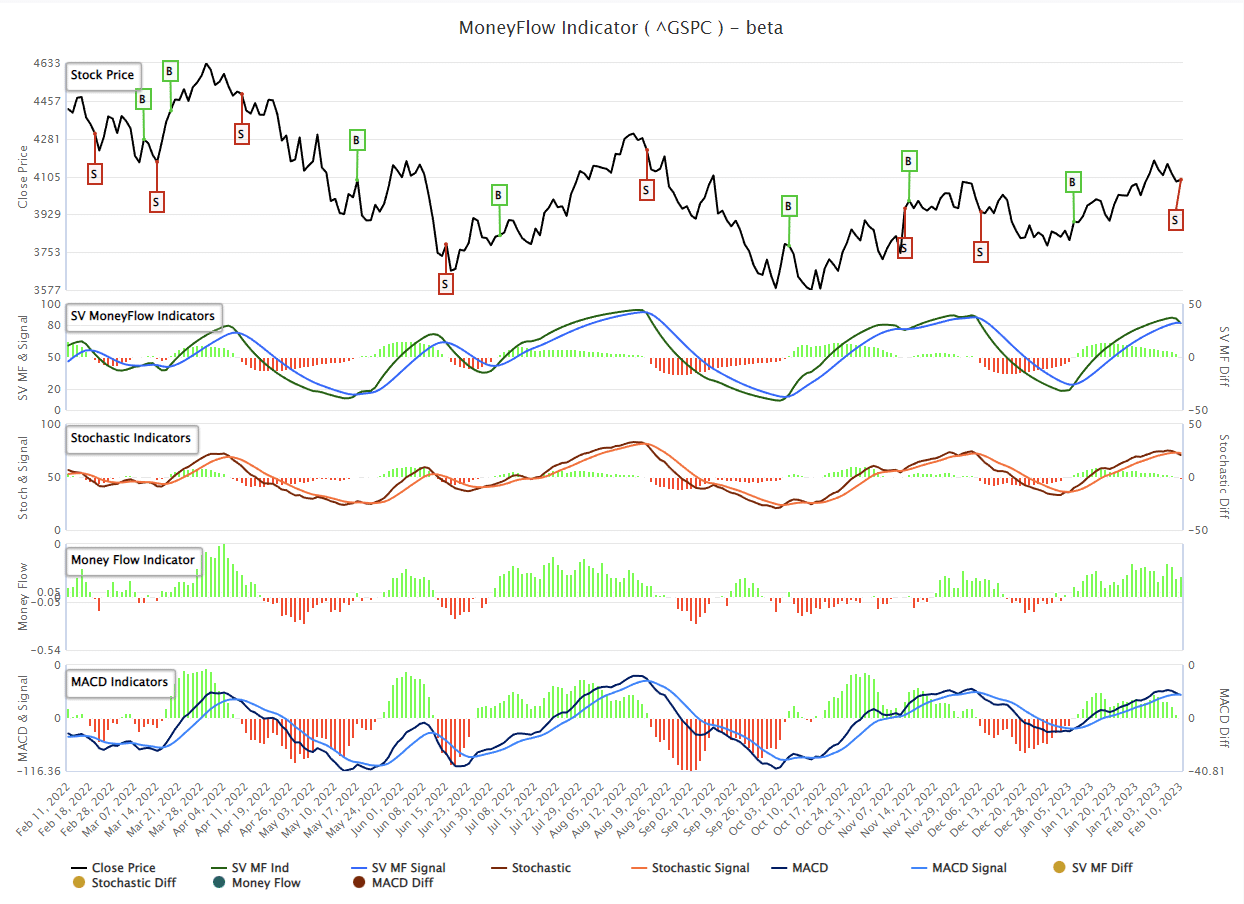
While that sell signal does not mean the market is about to crash, it does suggest that over the next couple of weeks to months, the market will likely consolidate or trade lower. Such is why we reduced our equity risk last week ahead of the Fed meeting.
Notably, our previous analysis remains crucial. There are currently multiple levels of vital support for the S&P 500, as shown in the chart below.
- 4045 is the downtrend line from the June and December rally peaks (dotted black line).
- 4010 is the previous 38.2% retracement level from the October lows.
- 3969 is the rising 50-DMA moving average which has now crossed above the 200-DMA (orange line).
- 3942 is the intersection of both the neckline of the inverse head-and-shoulders bottoming pattern and the 200-DMA (black line).
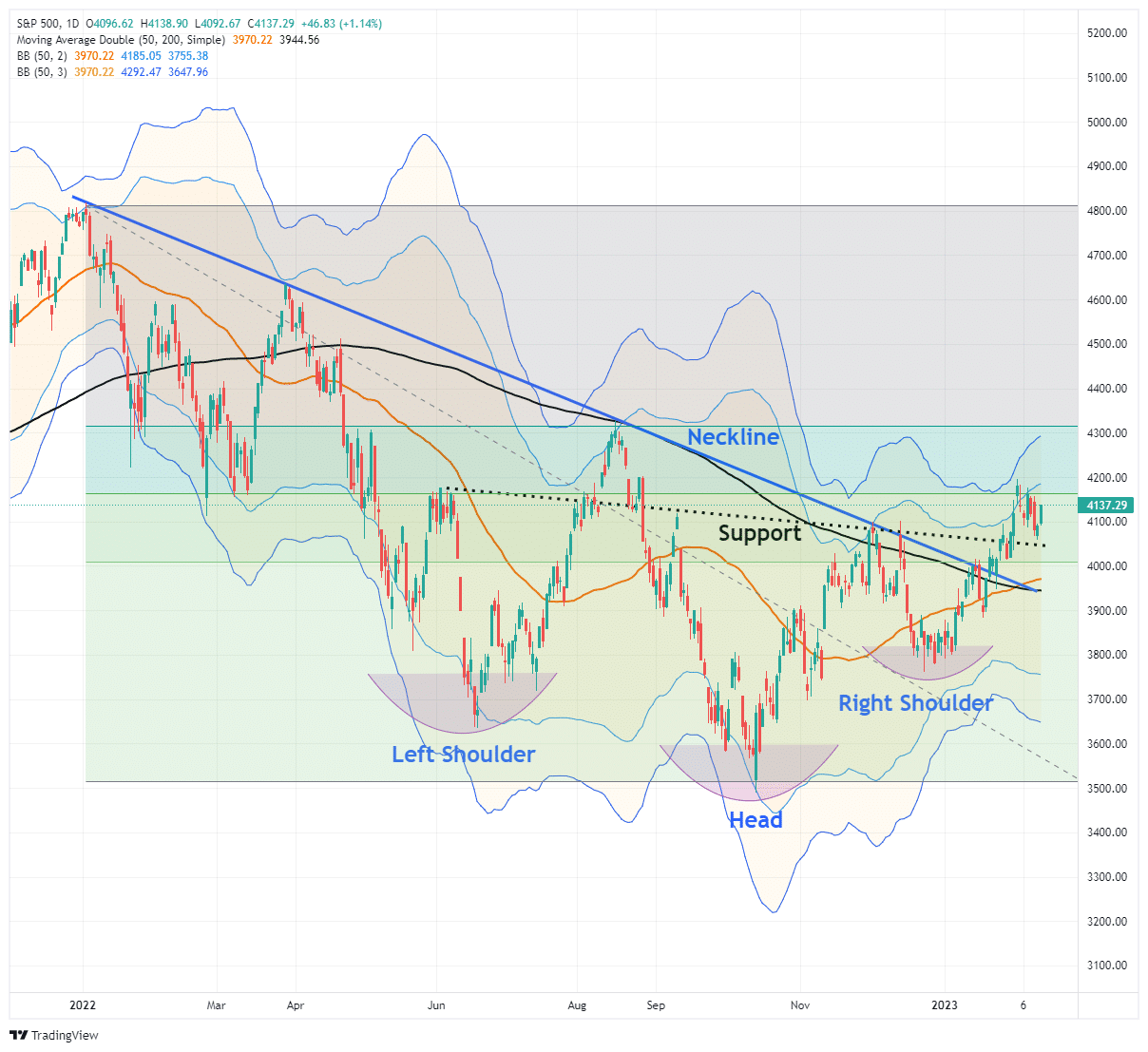
If the market correction violates all of those supports, such will suggest the “bear market” remains intact and the rally from the October lows was another “head fake.”
But is that possible?
Investors Are Very Bullish
We have noted several times that our most significant concern with the “bear market” and the “recession” calls was that everyone was expecting it.
“From a contrarian investing view, everyone remains bearish despite a market that corrected all of last year. I polled my Twitter followers recently to take their pulse on the market.
Of the 1280 votes cast in the poll, roughly 73% of respondents anticipate the market to be lower throughout 2023. That view also corresponds with our sentiment gauge of professional and retail investor sentiment, which, while improved from the October lows, remains depressed.”

As Bob Farrell’s Rule Number 9 states:
“When all the experts and forecasts agree – something else is going to happen."
As a contrarian investor, excesses are built by everyone betting on the same side of the trade. When the market peaked in January 2022, everyone was exceedingly bullish, and no one was looking for a 20% decline. Sam Stovall, the investment strategist for Standard & Poor’s, once stated:
“If everybody’s optimistic, who is left to buy? If everybody’s pessimistic, who’s left to sell?”
Interestingly, since January, the “bearish” outlook has given way to an “economic soft-landing,” and the bearish sentiment has faded quickly. Retail investors have sharply increased their equity allocations over the last couple of months, dropping their cash holdings sharply.
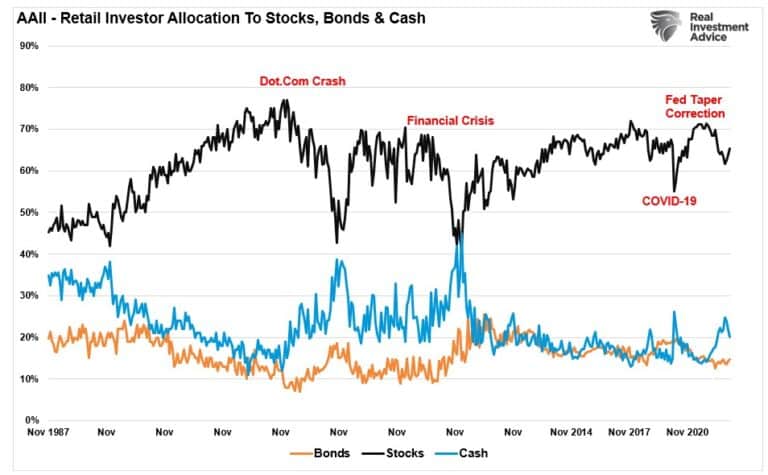
Such aligns with the sharp increase in bullish sentiment from retail and professional investors.
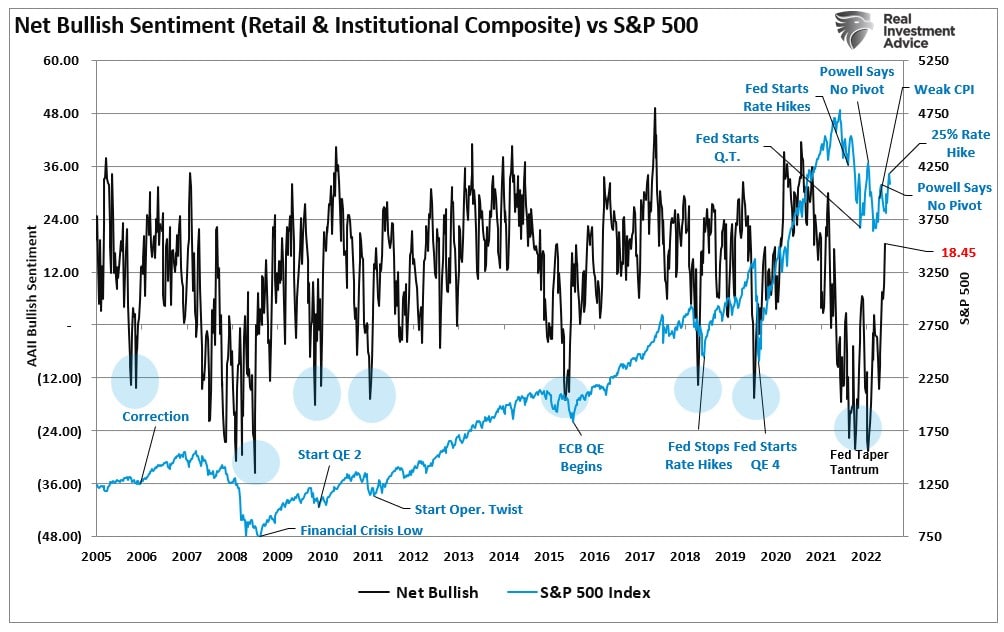
Also, professional investors have piled into the market in recent weeks, pushing exposures to more bullish levels.
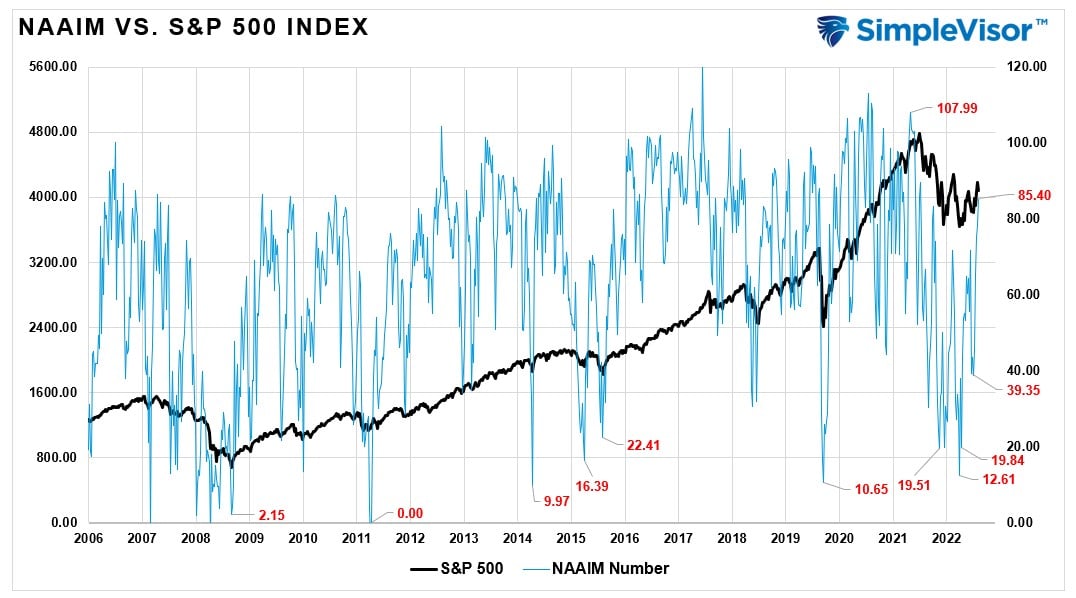
From a contrarian viewpoint, a sharp shift in bullish sentiment was needed if the bears are to reclaim control of the narrative. But this is where the battle begins.
The Battle Begins
Michael Hartnett of BofA recently laid out the parameters of the coming battle between the bullish technicals and the bearish fundamentals.
“I-Bear: secular inflation (= higher rates & volatility) + end of era of QE (Fed bought $7.5tn since Lehman) + end of era of US buybacks (corporations bought $7.7tn since Lehman).
I-Bull: that script changes if a hard landing in wages occurs before a hard landing in economy, if post-pandemic world reverts to bullish secular stagnation of past 15 years.
I-Wrong: inflation shock caused rates shock & Wall St shock but thus far is yet to cause recession shock; lag from easy monetary policy (through Wall St) into economy was instant in 2020; lag from tighter monetary policy has been much, much longer past 12 months; that’s because recessions are caused by re-financings & redundancies, and neither happening“
The last part is the most critical. Everyone expects the Fed to cut and politicians to panic via more stimulus checks, rebates, and debt forgiveness, at the first blush of recession. The problem with that view is that with a deeply divided Congress, the inflation experience of the last endeavor, and no financial stress, such is unlikely to happen.
However, banks tightening lending standards across the board is a risk to the market and the economy. That includes credit cards. As Hartnett states,
“…ultra-low personal savings rate & ultra-high credit card spending under threat… likely won’t take much unemployment for the US consumer to provoke concerns of a hard landing.”
The collapse in the M2 money supply suggests a contraction in inflation, and economic growth is likely.
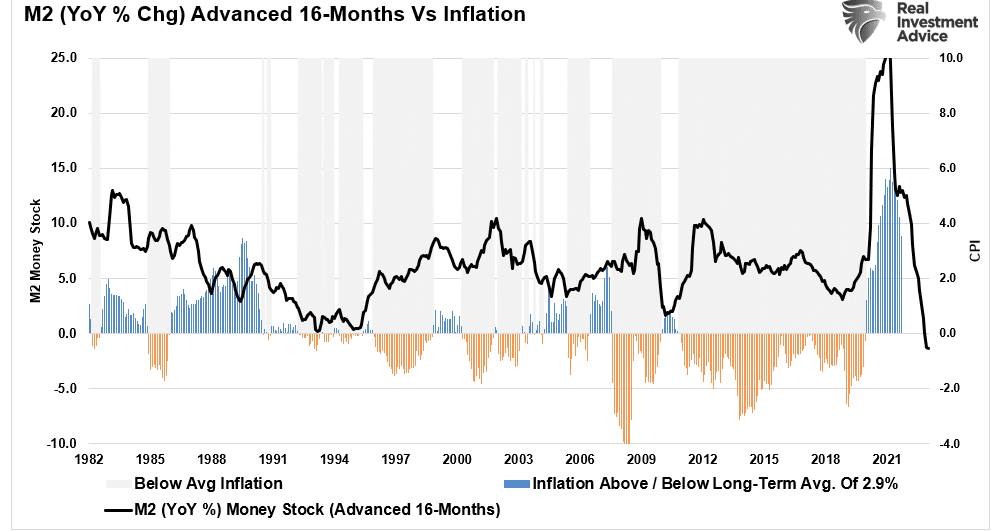
Over the next several months, some risks could undermine the bullish support of a “Fed Pause” and a “soft-landing.”
- If the market advance continues and the economy avoids recession, there is no need for the Fed to reduce rates.
- More importantly, there is also no reason for the Fed to stop reducing liquidity via its balance sheet.
- Also, a soft-landing scenario gives Congress no reason to provide fiscal support providing no boost to the money supply.
While the bulls remain in control of the market, we must trade it accordingly. However, the risk to the bullish view remains a challenge for the rest of this year.
Over the next few weeks, the “pain trade” is likely lower as the correction continues. If the bulls win this battle, those crucial support levels will hold. If not, we will likely begin a more profound decline as bearish fundamentals take over.
